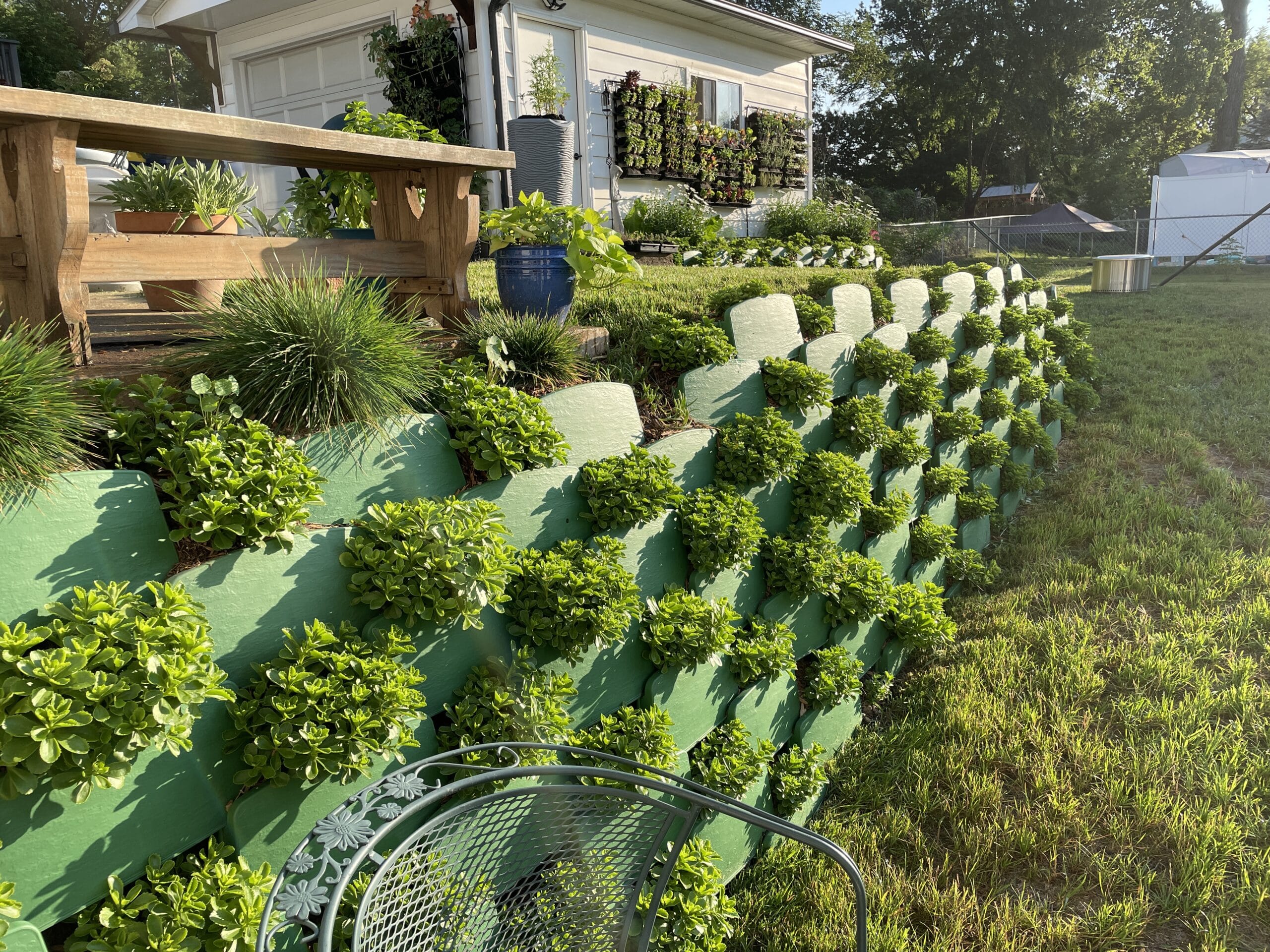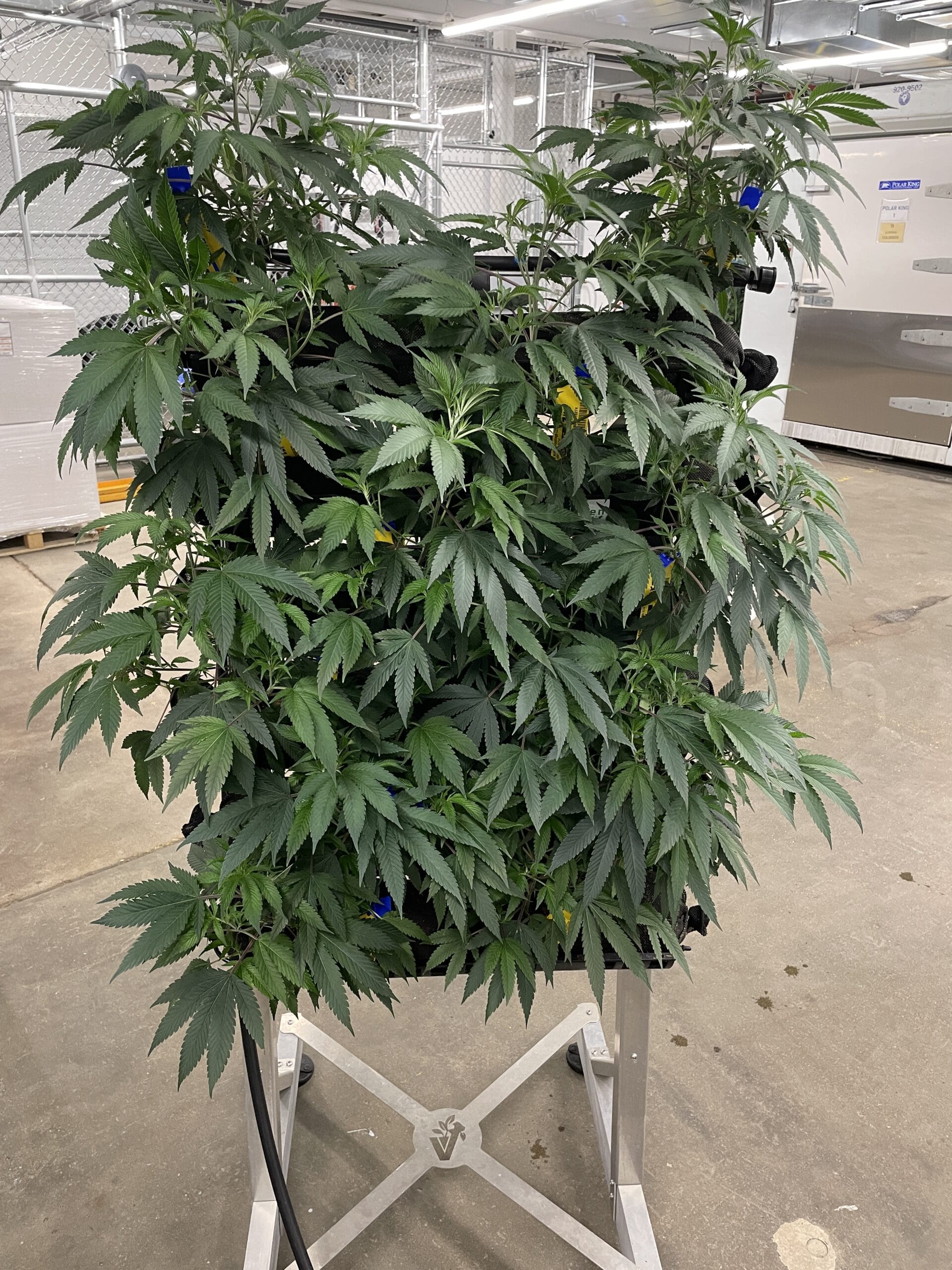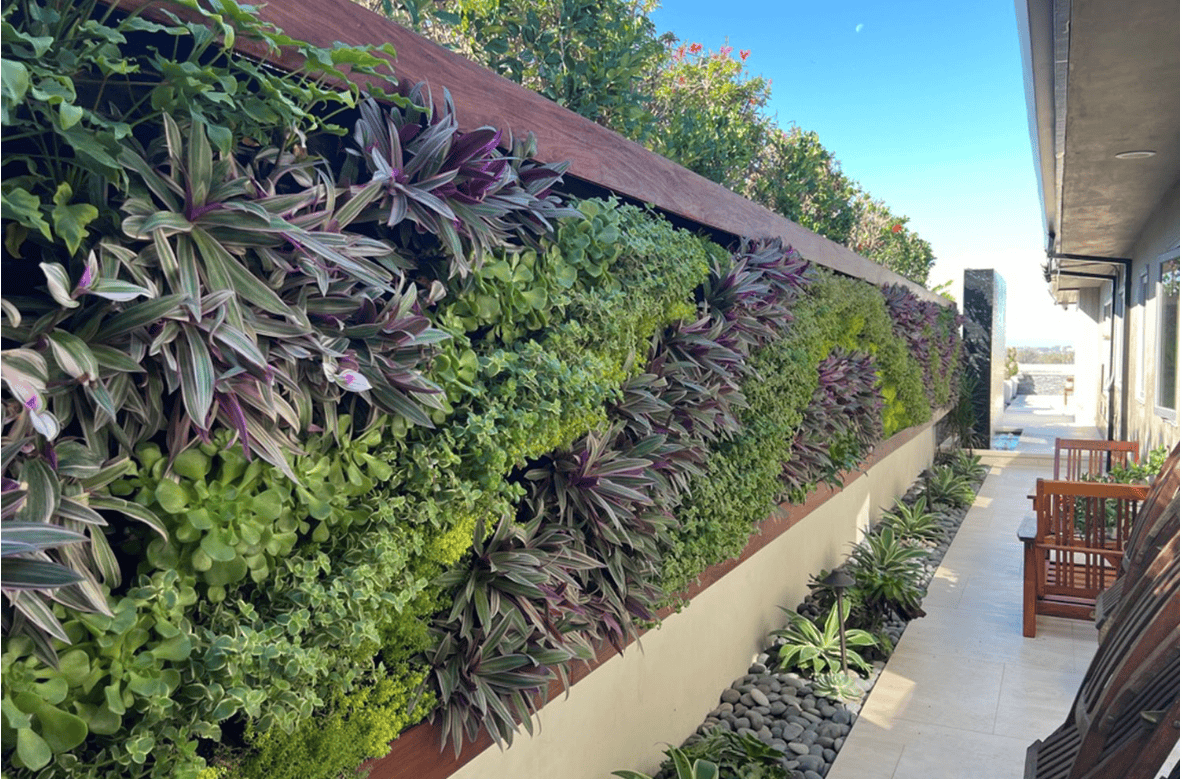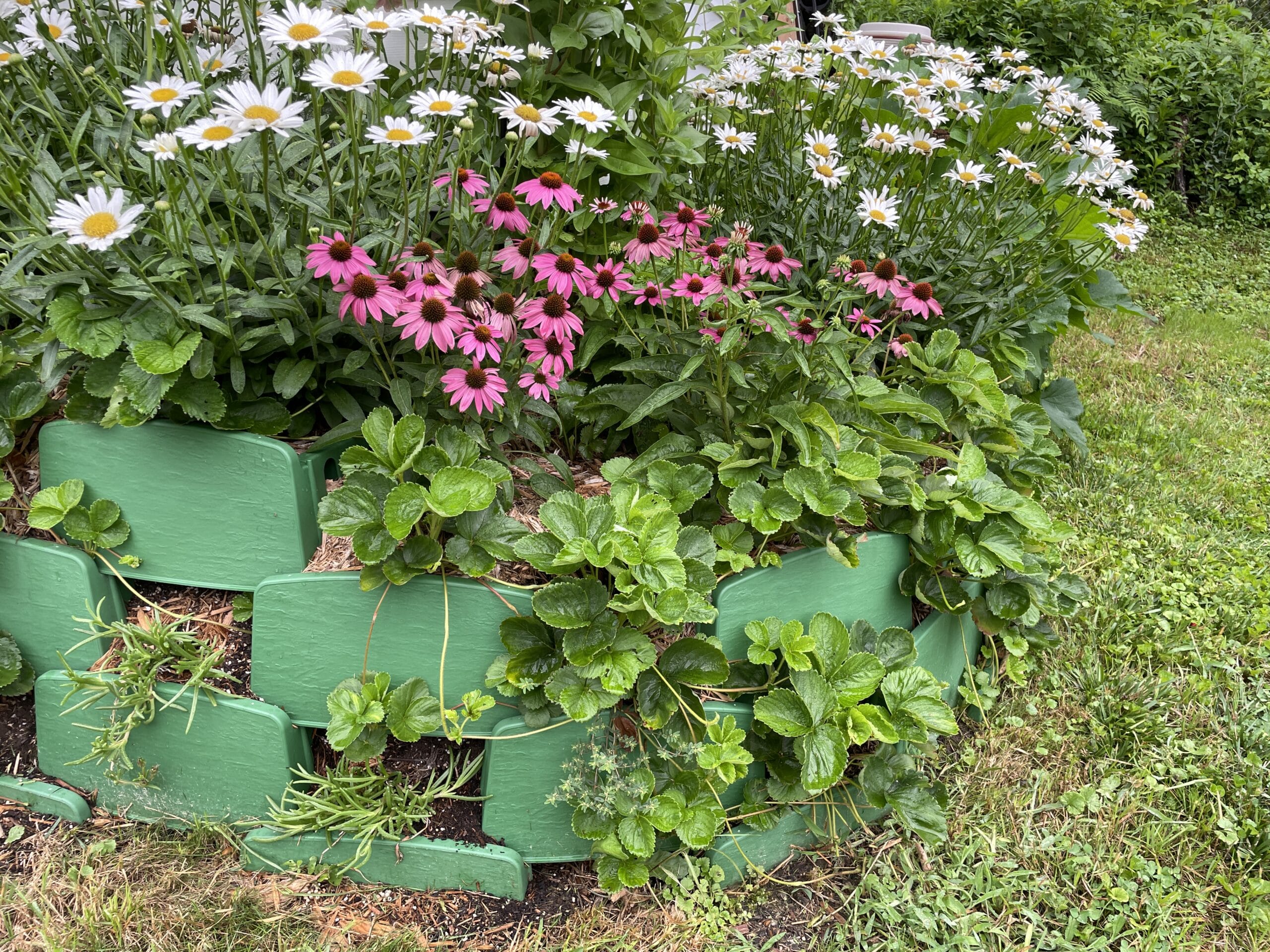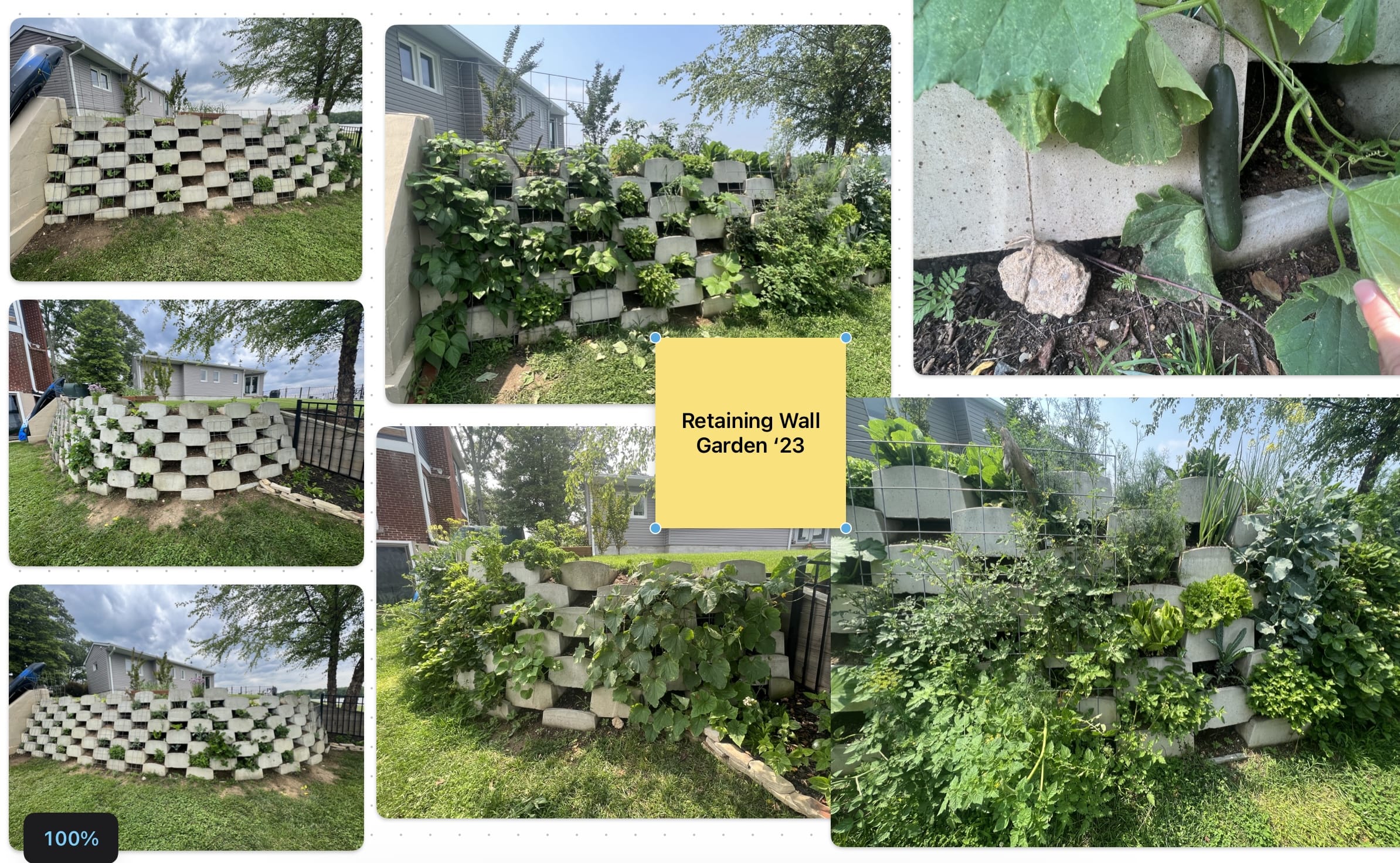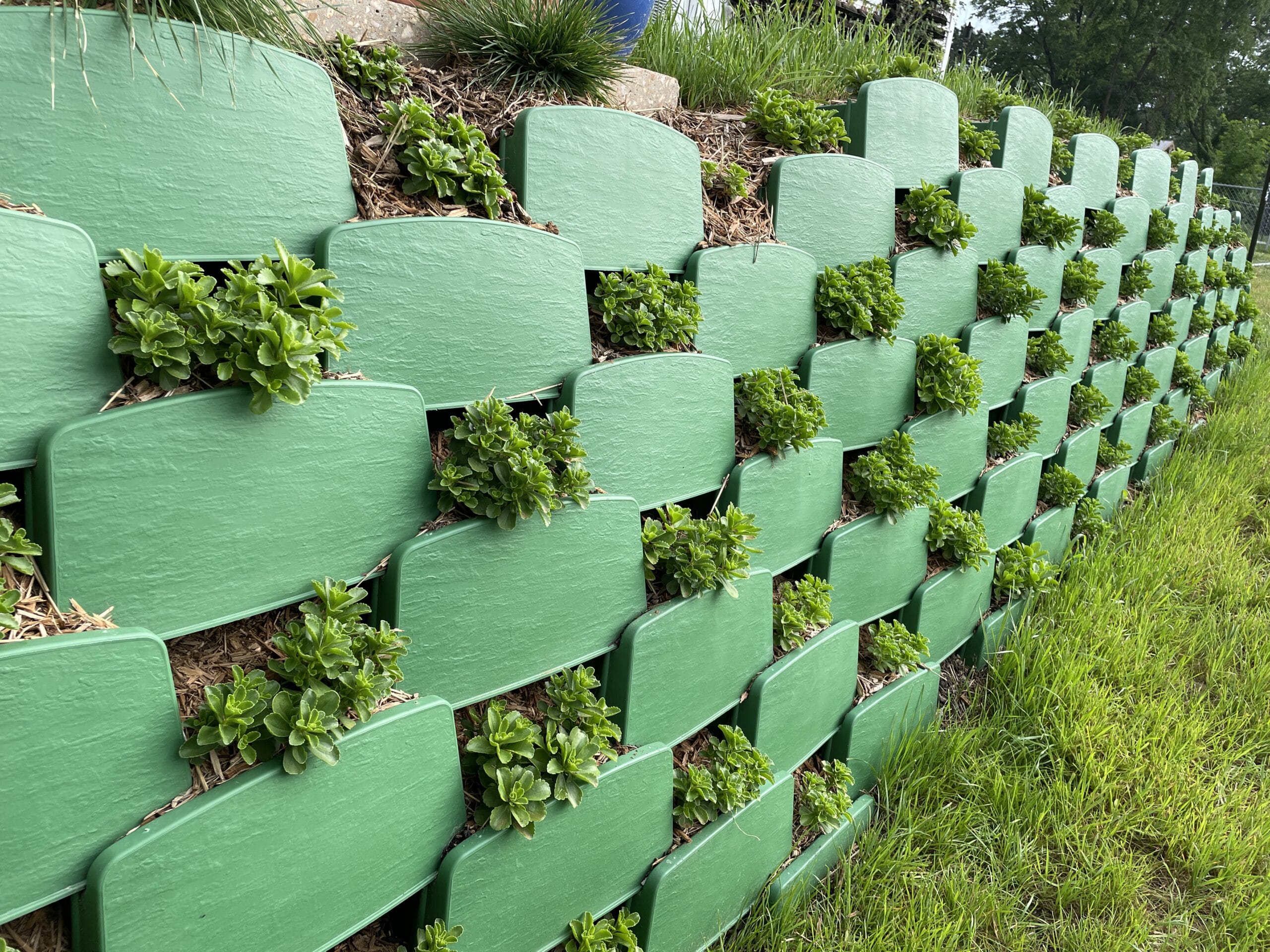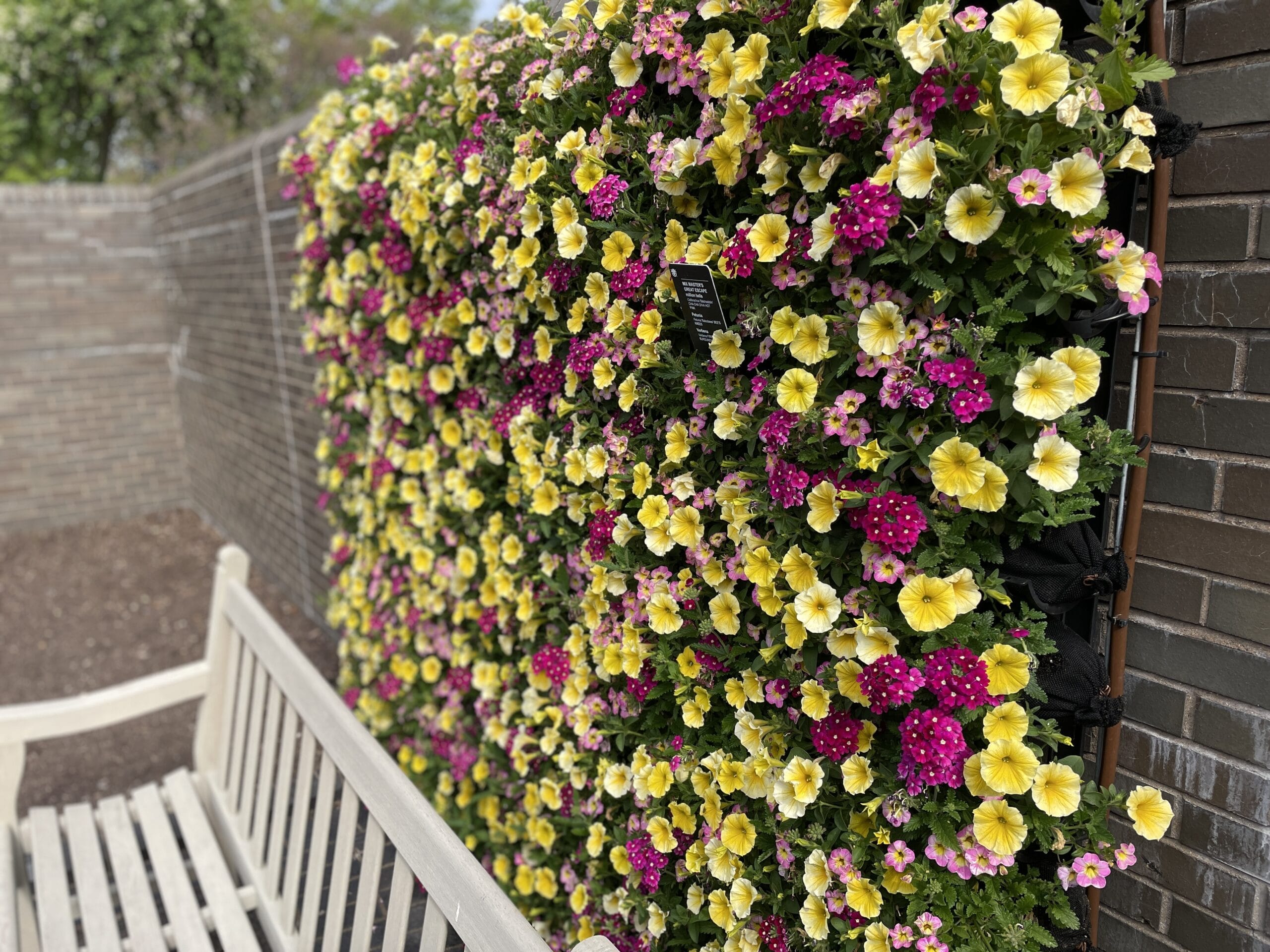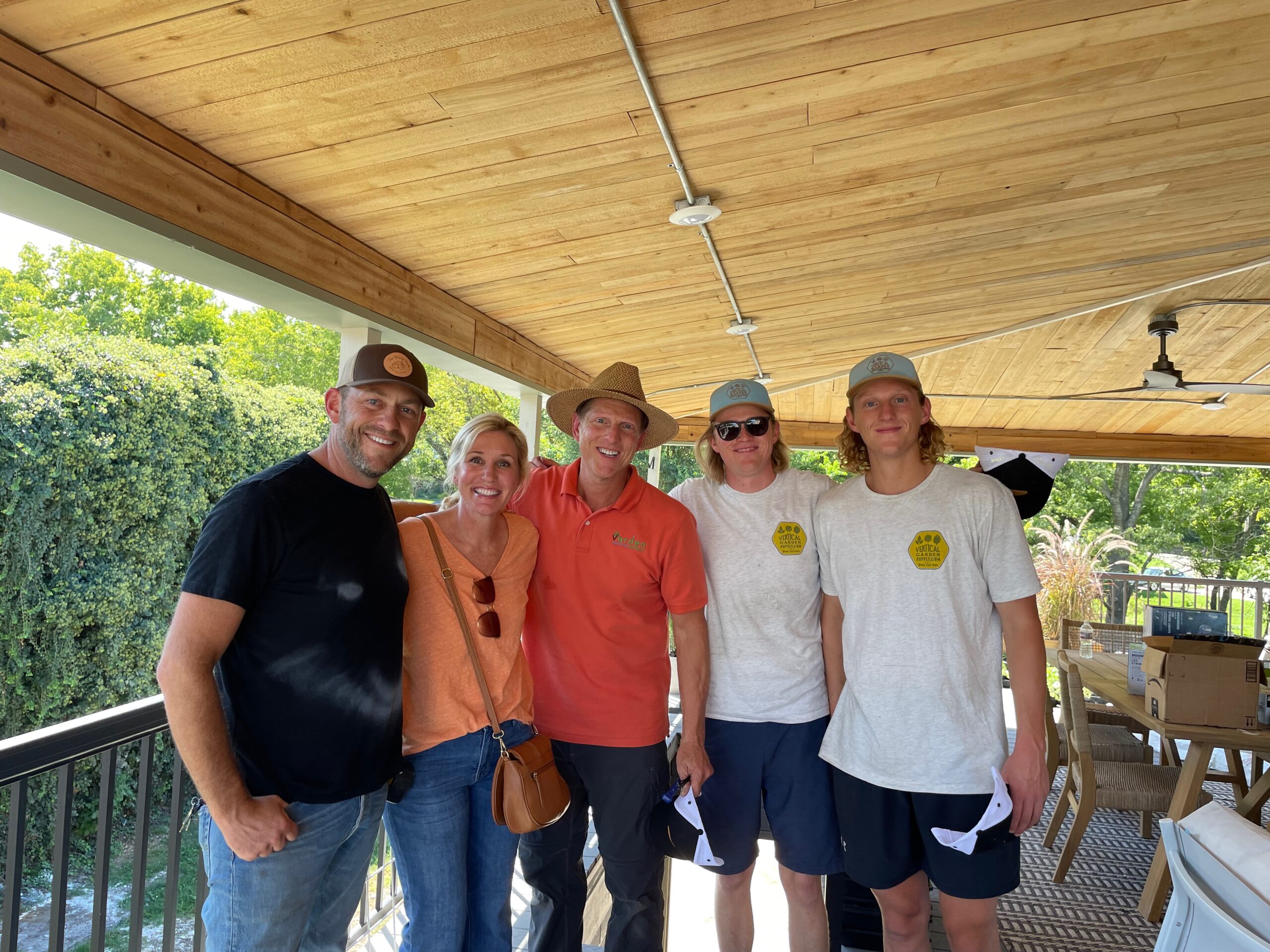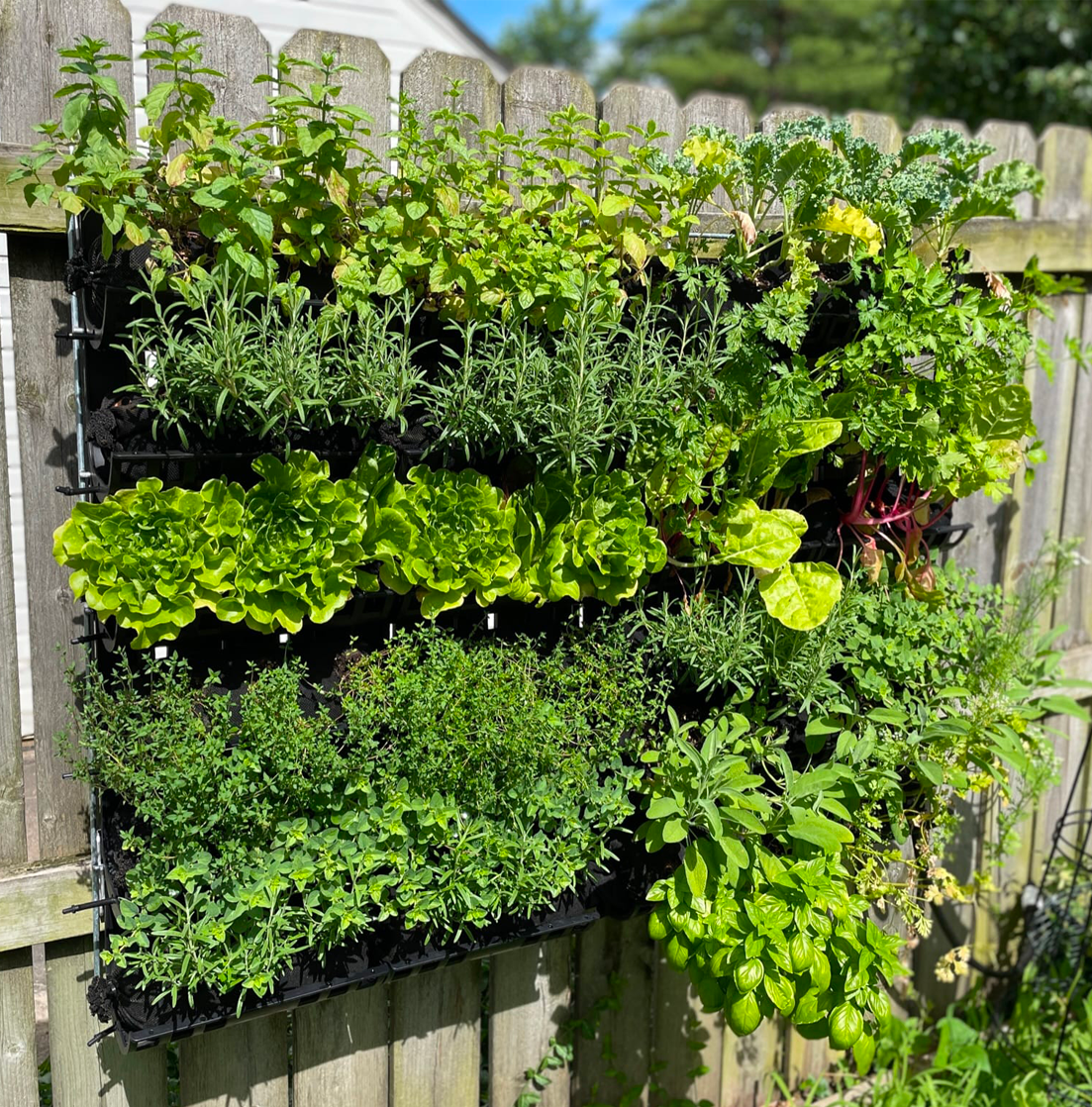Best Plants for Outdoor Living Walls
One of the most important – and fun! – steps in creating any garden is deciding what greenery will grace your garden bed. When you’re creating an outdoor vertical plant wall, you have nearly limitless options for what plants you can start growing.
Outdoor Plant Wall Considerations
The plants you choose for your outdoor garden wall will likely be different than the ones you add to your indoor plant wall. After all, the houseplants in your living room might not thrive in conditions outdoors.
Since you know your own space the best, pick plants that work well based on the following factors to consider:
- Appearance – How will all the plants look together once they’ve grown in? Will the colors and textures compliment each other? How will the plants grow – upwards, outwards, or downwards? Will that affect the shape and size of your green wall? Be sure to answer these questions before picking out which plants you want in your vertical garden and deciding where to place them.
- Growing season – Do you want to sow seeds every year, or just once? The answer to this question is important, as some plants only grow for a single season (annuals), take two seasons to complete their lifecycle (biennials), or grow for more than two seasons (perennials). You can stick to either one of these options or make things interesting by interspersing flowering annuals amongst longer-growing plants.
- Lighting – Not all plants thrive in the same conditions. Some like to relax in the shade while others will wither without access to direct sunlight. Make sure each species you choose will be planted in an area where they can get their lighting needs met.
- Maintenance – Be honest with yourself: Will you keep up with high-maintenance plants? After all, you don’t want your green wall to look brown. If you want a more hands-off approach to gardening, be sure to select low-maintenance plants that are hardy and disease resistant.
- Roots – How deep will plants grow? If you’re using our Vardensocks, stick with plants that have shallow roots. If plants need deeper soil, you can grow your garden inside our Varden™ Sleeves.
Best Plants for Your Vertical Wall
Whether you want to create an aesthetically pleasing flower garden or grow your own food, the following plants are fine additions to any living wall system in your outdoor space. You may want to review another post on planting vertical gardens too.
Edible Plants
There is nothing quite like the taste of fresh herbs, fruit, and vegetables. The following easy-to-care-for plants can quickly fill out your herb garden:
- Stevia (Stevia rebaudiana) – Candyleaf is the sweet sugar alternative that’s perfectly at home in warm, sunny habitats and moist soil.
- Basil (Ocimum basilicum) – Basil grows best outdoors in well-drained soil with access to full sunlight.
- Flat Parsley – Flat-leaf parsley enjoys partial or full-sun growing conditions and well-drained soil.
- Swiss Chard ‘Bright Lights’ – Swiss chard loves full sunlight, although it can grow in partial shade as well.
- Oregano (Origanum vulgare) – Oregano isn’t a picky plant; it can thrive in well-drained soil in full or partial sunlight.
- Thyme – Well-drained soil, full sun, and heat all make thyme feel right at home.
- Mint (Mentha) – Mint loves moist, well-drained soil and full or partial sun conditions.
- Spinach ‘Imperial Green’ – Spinach loves the sun, although it can grow in partial shade with well-drained soil.
- Rosemary (Salvia rosmarinus) – Rosemary enjoys exposure to full sunlight and well-drained, loamy soil.
- Chives (Allium schoenoprasum) – Chives enjoy well-drained soil and full or partial sunlight.
- Sorrel (Rumex acetosa) – Sorrel loves damp soil, mild temperatures, and full or partial shade.
- Lettuce ‘Simpson Elite’ – This lettuce variety grows quickly and enjoys cool weather conditions with full or partial shade.
- Sage (Salvia officinalis) – Sage loves sunny habitats with well-drained soil.
- Curly Parsley – Like flat-leaf parsley, curly parsley likes well-drained soil and full sun conditions, although it can grow in partial-sub habitats, too.
- Cilantro (Coriandrum sativum) – Coriander loves fertile, well-drained soil and access to direct sunlight.
- Lettuce ‘Red Salad Bowl’ – This lettuce variety is great for gardens that experience warmer weather.
Annual and Perennial Flowers
Flowers are popular additions to many garden beds and hanging baskets. But did you know that they also can thrive in vertical growing conditions to create gorgeous living wall art?
The following flowers are worthwhile additions to your vertical planters and thrive best in sunny conditions:
- Morning glory – “Morning glory” can refer to many species of flowers; some are considered perennials and some annuals. Most species enjoy full sunlight throughout the day.
- Petunia – Petunia refers to a genus of 20 perennial flowers that do well in full sunlight, moist soil, and low humidity conditions.
- Verbena – Vervain or verveine is a genus of both annual and perennial flowers that almost always enjoy sunny growing conditions.
- Viola × wittrockiana – Pansies are perennial hybrids, although oftentimes people grow them as biennials or even annuals. They love full sunlight but do not like high heat conditions.
The following flowers also grow easily in vertical wall planters, although they thrive in partial-sun or shady conditions:
- Athyrium niponicum – Japanese painted fern is a perennial plant that loves shaded habitats.
- Epipremnum aureum – Devil’s ivy is a perennial vine that enjoys indirect sunlight.
- Orchidaceae – Most orchids are perennials and often enjoy indirect sunlight, although best growing conditions will vary by exact species.
Tropical plants
DIY landscaping enthusiasts know that nothing adds an exotic splash to your space quite like tropical plants. The following species can liven up any vertical garden:
- Aphelandra squarrosa – Zebra plants don’t like direct sunlight, although they do enjoy brightly lit conditions. This plant is easy to under or overwater, which is why many horticulturists opt for giving it small amounts of water throughout the day rather than watering it profusely at a single time.
- Asplenium nidus – Being native to temperate and tropical habitats, bird’s nest fern grow well in shady conditions with moist soil.
- Begonia – This genus, or grouping, of perennial flowers loves moist soil. While each species has different needs, the majority of Begonia plants enjoy warm weather but do not like full sun.
- Liriope spicata – This perennial plant goes by many names, including lilyturf, monkey grass, and creeping liriope. This plant thrives best in moist soil with partial shade, although it can tolerate other lighting and soil conditions.
- Peperomia caperata – Emerald ripple peperomia is an evergreen flowering plant that can tolerate direct sunlight in the morning or evening hours, although it truly thrives when exposed to lots of indirect light.
Succulents
Succulents are incredibly popular plants for outdoor gardens, and it’s no secret why: They’re resilient, easy to care for, and attractive. The following succulents can make themselves right at home inside your living plant wall:
- Crassula ovata – Lucky plant, jade plant, lucky plant, money tree… No matter what you call C. ovata, you can be sure that it will add beauty to any outdoor space. It thrives in medium-shade conditions and is easily overwatered.
- Curio rowleyanus (Senecio rowleyanus) – Also known as string-of-pearls, these creeping perennial vines enjoy partial shade outdoors. While attractive, this plant is somewhat poisonous, so avoid putting it anywhere near edible plants.
- Echeveria elegans – Also known as white Mexican rose or Mexican snowball, this flowering evergreen naturally grows in semi-desert or subtropical conditions.
- Sedum – Also known as stonecrops, these plants are commonly seen in succulent gardens thanks to their eye-grabbing appearance. Sedum is a large genus, so care for them will vary depending on which specific species you add to your garden.
Sempervivum – Commonly known as houseleeks or liveforevers, this genus of perennials make great groundcover or additions to vertical plant walls. Many species of Sempervivum enjoy dry, sunny environments.

